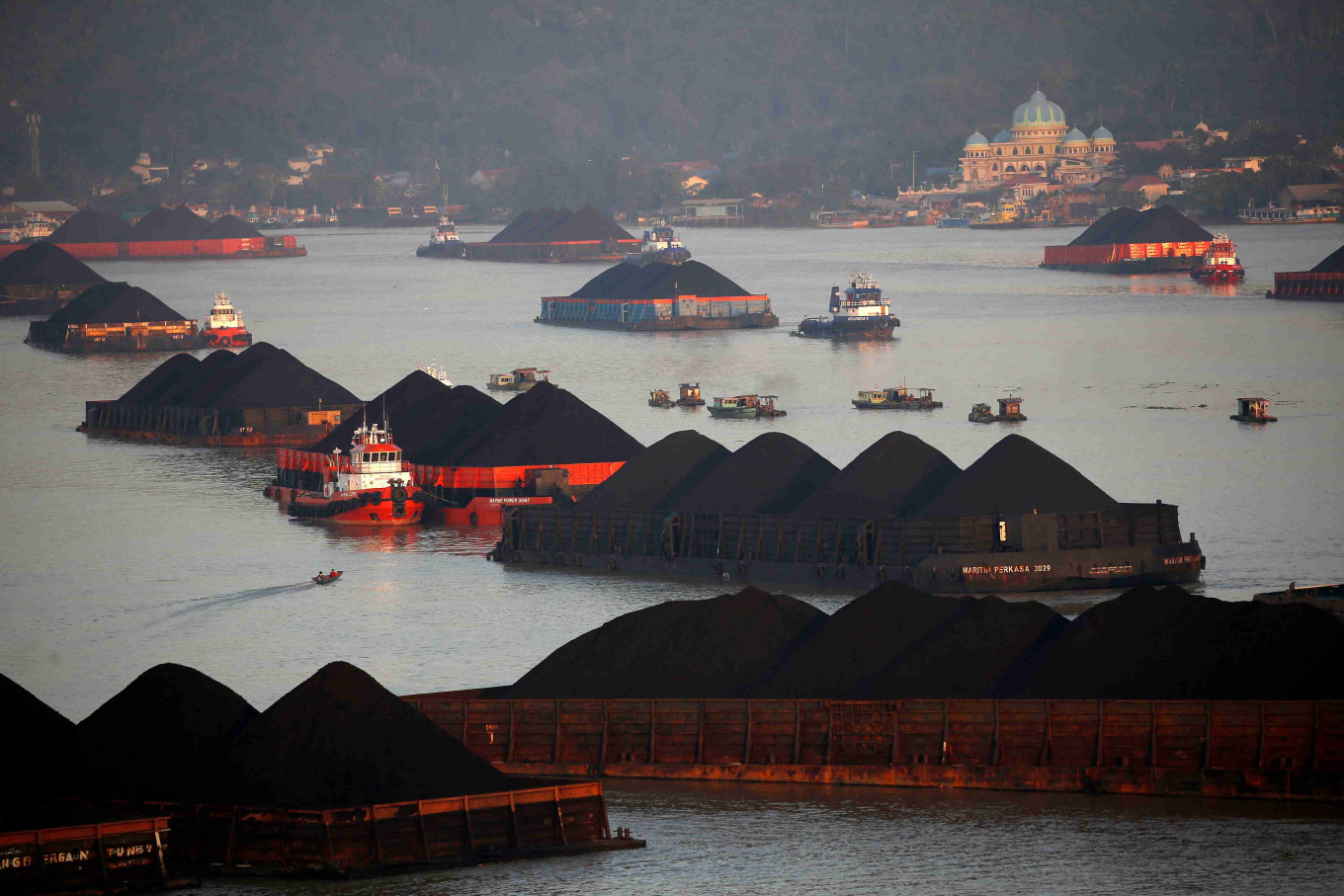Popular Reads
Top Results
Can't find what you're looking for?
View all search resultsPopular Reads
Top Results
Can't find what you're looking for?
View all search resultsCaptive power casts doubt on JETP emissions reduction goal
Newly built captive power plants fueled with coal may be a stumbling block for Indonesia’s effort to cap power sector carbon emissions and get international financial support for its energy transition.
Change text size
Gift Premium Articles
to Anyone
N
ewly built captive power plants fueled with coal may be a stumbling block for Indonesia’s effort to cap power sector carbon emissions and get international financial support for its energy transition.
Southeast Asia’s largest economy needs to devise a strategy to cap annual carbon emissions from the power sector at 290 million tons, a figure set as a requirement for accessing US$20 billion through the Just Energy Transition Partnership (JETP).
A captive power plant supplies electricity for a specific industrial or commercial facility and is typically managed by the owner of that facility. It makes the user independent of public power supply.
Bhima Yudhistira, director of the Center of Economic and Law Studies (CELIOS), said the technicalities over the peak emissions target from the power sector may be a huge hindrance to the landmark climate financing deal.
“[Stakeholders] have a wrong perception and tend to be defensive, saying it is still necessary to build new coal fleets in industrial areas,” he told The Jakarta Post on Monday. “If you look at it, the problem lies in the International Partners Group’s [IPG] conflicting interests with China in Indonesia’s energy transition, including the issue of power plants for processing critical minerals.”
He went on to say that it was urgent for the government to revise Presidential Regulation No. 112/2022 on renewable energy, which entered into force in September last year.
The regulation allows the construction of coal plants that had been included in the long-term electricity procurement plan (RUPTL) prior to its issuance, as well as captive coal power plants.
“The [regulation] is the root of the problem.”
Article 3(4) of the regulation provides leeway for building power facilities that are integrated with industries depicted as adding value to the country’s resources or included in the National Strategic Plan to create jobs or boost economic growth.
The issue has been proven a hindrance to the deployment of Indonesia’s JETP. The JETP Secretariat, tasked with preparing the final Comprehensive Investment and Policy Plan (CIPP), has pushed back the launch of the much-anticipated investment plan to “later this year”, one of the snags in the process being the expanding electricity generation capacity from captive coal power facilities.
“The technical working group is tasked with creating several scenarios to achieve the target that has been set. It is up to the government and the IPG to negotiate the target itself,” Fabby Tumiwa, executive director of the Institute for Essential Services Reform (IESR), told the Post on Aug. 16 when asked about possibly negotiating the peak emission target agreed upon under the JETP.
“Currently, it is still in the simulation phase,” Warsono, state-owned electricity utility PLN’s executive vice president of power system planning, told reporters in Jakarta on Aug. 3, when asked whether any endeavors existed from PLN’s side to make JETP’s carbon emissions cap less ambitious.
The Energy and Mineral Resources Ministry’s Electricity Directorate General did not immediately respond to a request for comment.
Read also: RI delays launch of JETP investment plan for public review
Coal power currently accounts for around 43 percent of Indonesia’s electricity mix, making the country one of the world’s top carbon dioxide (CO2) emitters.
Indonesia had 18.8 gigawatts of coal power under construction at the end of 2022, according to a 2023 report by Global Energy Monitor (GEM), which uses publicly available data on company plans.
That is nearly half of Indonesia’s current coal power capacity, which stands at 40.6 GW.
Most of these new coal plants, at 13 GW or 69 percent, are captive coal plants, many of which supply power for energy-intensive industries including aluminum smelters and nickel and cobalt processing facilities, which the government says are the basis for building electric vehicles (EVs) and battery supply chains.
Captive renewable power plants
Singgih Widagdo, chairman of the Indonesian Mining and Energy Forum (IMEF), said industrial growth required a reliable supply of electricity to prevent hiccups in daily operations, which may be the reason why companies chose to build their own power plants as opposed to buying electricity from PLN.
Nevertheless, he encouraged more industries to collaborate with international corporations with experience in the electricity sector to boost the deployment of renewable captive power to accelerate the energy transition.
“A few companies are opting for renewable energy captive power generation, but the capacity is not big yet,” he told the Post on Monday, referring to the 5-GW captive solar power plant project by PLN sub-holding PT Indonesia Power in collaboration with China Energy Engineering Corporation and Baosha Taman Industry Investment Group (BTIIG) in Morowali, Central Sulawesi.
Indonesia needed more than $1.2 trillion to replace coal power generation and meet increasing electricity demand from 2022 to 2050, which is expected to be dominated by investment in energy efficiency measures as well as the construction of renewable energy, storage, transmission and distribution network, according to a 2022 study published by IESR and the University of Maryland.
The investment must scale up to reach $135 billion between 2022 and 2030, the study reads.
For comparison, the total energy investment, including for fossil fuels, was just over $35 billion in the 2017 to 2022 period. A small chunk of that, at $1.5 billion to $2 billion, went into renewable energy development.










